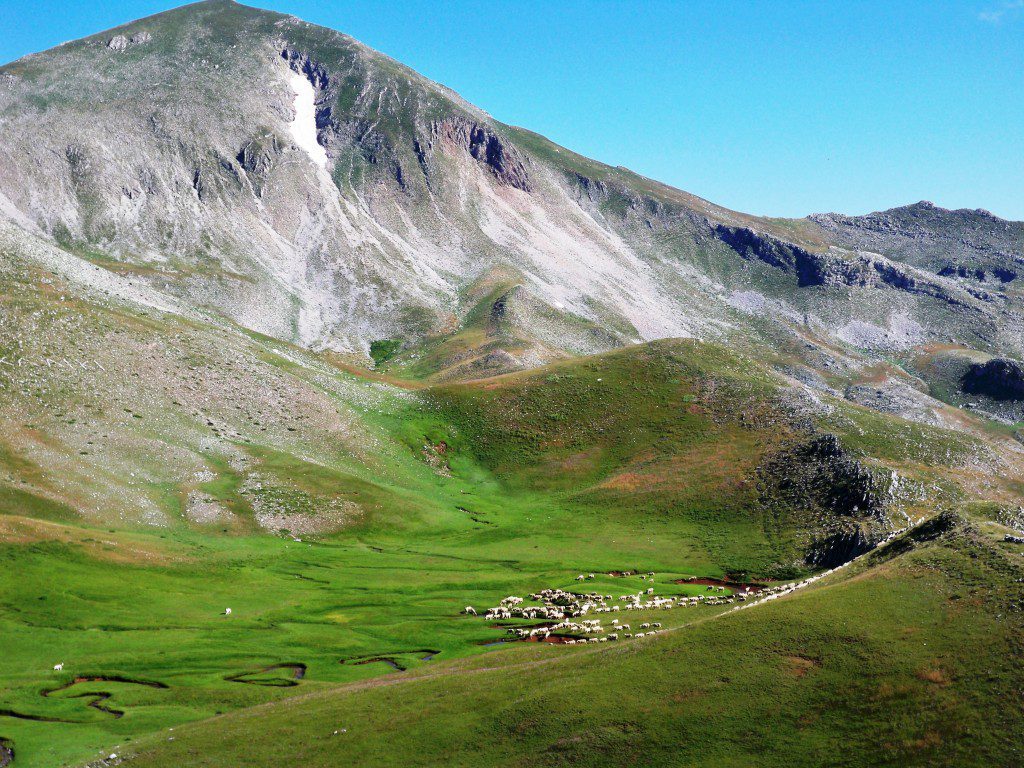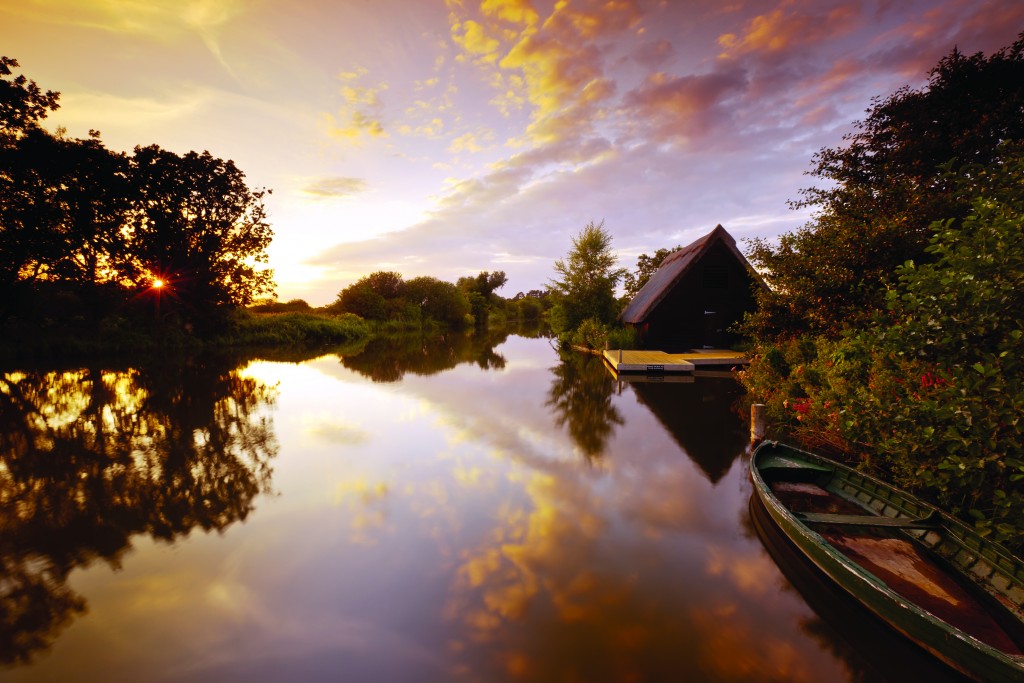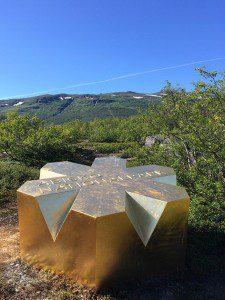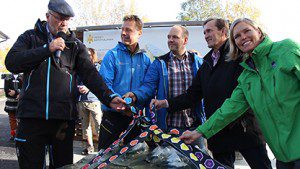Charter Award Ceremony 2016
On the 7th December, the EUROPARC Federation will be celebrating success at the European Parliament with the 19 Sustainable Destinations that will be awarded with the European Charter for Sustainable Tourism in Protected Areas.
The Charter Award Ceremony 2016 is kindly hosted by the Member of the European Parliament (MEP) Ramon Tremosa i Balcells, from the Group of the Alliance of Liberals and Democrats for Europe.
The ceremony will be an outstanding opportunity to look at the benefits that sustainable tourism strategies provide for people, environment and local economy within protected areas.
We will once more raise the voice of Protected Areas at the highest European institutional level, with the opportunity to share good practices and case studies from the ground.
Members of the European Parliament, representatives of the European Commission and Members of the Committee of the Regions will contribute to the debate, providing the EU perspective, with highlights on recent policy developments and upcoming priorities.
Download the complete Programmme of the Charter Award Ceremony 2016
New 11 Sustainable Destinations
From the 19 Charter areas that will be awarded, 11 have just started their path towards becoming a Sustainable Destination and 8 have renowed their commitment on working with the local stakeholders for a higher quality tourism experience, for people and nature alike.
For the first time, 2 Parks in Greece will be awarded, expanding the Charter Network to 19 countries! Also for the first time, two parks co-operating across borders with the Transboundary Parks Programme will also be awarded: the Julian Alps Transboundary Ecoregion.
Greece
- National Park of Tzoumerka, Peristeri and Arachthos Gorge
- Chelmos Vouraikos National Park & Unesco Global Geopark
Italy
- Parco Nazionale Arcipelago Toscano
- Parco Nazionale del Cilento Vallo di Diano ed Alburni
- Ente di Gestione delle Aree Protette del Monviso
- Area Marina Protetta e Riserva Naturale dello Stato di Torre Guaceto
- Riserva Naturale Statale Gola del Furlo
Italy/Slovenia
Spain
Portugal

Tzoumerka National Park, Greece, will be one of the 19 Sustainable Destinations awarded in 2016 © Tzoumerka NP, Alexandros Moliotis
8 Sustainable Destinations re-awarded
Sustainability is a long-term commitment therefore every 5 years Parks are asked to review the work implemented and re-assess their performance. For that, Parks engage in a re-evaluation process and plan the five years ahead by engaging with the local forum of stakeholders. This year, 8 parks were successfully re-evaluated:
France
- Parc naturel régional des Alpilles
- Syndicat mixte du Parc naturel régional Livradois-Forez
- Parc naturel régional du Vercors
Spain
- Parque Nacional de Cabañeros
- Parque Natural Montseny
- Parque Natural de Sant Llorenç del Munt i L’Obac
- Parc Natural de la Zona Volcànica de la Garrotxa
United Kingdom

The Broads, recently recognised as Broads National Park, reassured their commitment with Sustainable Tourism and will be one of the 8 Parks re-awarded with the Charter for Sustainable Tourism in Protected Areas © The Broads, Tom Mackie
Special Side event and Cocktail
After the Award Ceremony in the European Parliament, participants are kindly invited to attend a special side event and cocktail, organised by the Patronat de Turisme Costa Brava Girona (Catalonia, Spain). Participants will have the chance to discover the Costa Brava and Girona Pyrenees’s nature parks and taste some of their delicacies, with a gourmet lunch.
The event will foresee the participation of the EUROPARC Federation, all Charter Parks awarded, all participants at the Award Ceremony, specialised press and NECSTouR – Network of European Regions for Competitive and Sustainable Tourism.
The side event will take place at the Delegation of the Government of Catalonia to the EU, Espai Catalunya Europa, Wetstraat 227 Rue de la Loi, 1040 Brussels.

Registrations open
The Charter Award Ceremony and the Side event are addressed to Protected Areas, local authorities, tourism experts and verifiers, partner businesses and tour operators, EU Institutions representatives, NGOs and other interested organisations. The event is free of charge but registration is mandatory. Please make your registration in this link before the 30th November.
Learn more about the European Charter for Sustainable Tourism in Protected Areas with the brochure “Good for Parks, Good for People”.
Invasive Crafted Species: If you like it, craft it!
Invasive alien species are a major environmental issue and one of the biggest causes for species extinction. Caused by the introduction of animals or plants into a new ecosystem, it has serious negative consequences to the habitats and, every year, over €12 billion are spent in preventive and remediation measures in the European Union.
How to raise awareness on Invasive Alien Species in Europe? The Bern Convention launched today a very creative campaign that combines invasive alien species, “Do it Yourself” youtubers and beautiful crafts … Curious about it?
“If you like it, craft it!”
invasivecraftedspecies.com
Under the motto “If you like it, craft it!”, the campaign encourages people to create their own Invasive Species craft, engaging citizens under a positive and constructive message.
Famous DIY (Do It Yourself) youtubers were invited to produce beautiful crafts and share on youtube their Tutorials. The campaign highlights the dangers of exotic species and aims to involve citizens in fighting this major environmental problem.
Invasive Crafted Species involves a media and social media campaign with the release of different tutorials as well as promotional spots in 4 European languages. The campaign will be centralised at www.invasivecraftedspecies.com and disseminated under the hashtag #BetterCraftIt in social networks.
In order to target large population sectors with little appreciation of this issue, Invasive Crafted Species leverages on the use of social media by involving professional DIYers from different European countries with an important presence in Youtube. As part of the campaign, they have produced explainer videos on how to craft different invasive species like the water hyacinth, the common slider, the Siberian chipmunk or the ice plant, using techniques such as crochet, watercolour, polymer clay or polystyrene. This aims to highlight the contrast between the highly damaging species in the wild and the harmless crafts.
Invasive Alien Species and public awareness
and the Invasive Crafted Species campaign
Although citizen’s release of exotic species is an important cause for this environmental crisis, most indicators point that public awareness is relatively low amongst Europeans. It is estimated that there are over 10,000 alien species present in Europe, out of which an alarming 15% represent important threats to native plants and animals. They have been found to carry diseases, devastate wild ecosystems and crops, and seriously harm biodiversity.
According to Piero Genovesi, expert on invasive alien species at IUCN, “invasions are a result of human action, and only changing our collective behaviors we can mitigate the effects of this threat.”
One of the causes for the establishment of these invasive populations is the unintentional or deliberate release of exotic species. These tend to be particularly destructive, as they initially invade fragmented ecosystems around metropolitan areas, where they thrive on the unused resources and the lack of competitors or predators. For instance:
- 9% of invasions affecting fish were associated with the introduction of ornamental plant varieties
- 100% of mammalian invasions have originated from the escape of pets
- 15 bird species and 9 amphibians/reptiles commonly kept in people’s homes have been found to be invasive
In contrast with most awareness campaigns about invasive species and biodiversity loss with predominant use of doom messages, which has proved to not be efficient in encouraging citizen action. According to Iva Obretenova, Secretary of the Bern Convention, the campaign
will improve citizens’ sensibility towards nature conservation issues is one of the Convention’s main objectives. I am certain this Campaign will be a catalyst for many people’s realization their individual actions do make a change when it comes to limiting the spread of Invasive Alien Species.
About the Bern Convention
The Bern Convention is the European treaty for the conservation of wild species and habitats on the continent. Since more than 30 years, the Convention contributes to the sustainable development of life on our planet. It was signed under the auspices of the Council of Europe in 1979, and has since been ratified by 50 countries and the European Union itself. One of the main lines of action of the treaty is the fight against invasive alien species, which are an increasing threat to European biodiversity.
Seminar: Climate change adaptation in Spanish Protected Areas
© EUROPARC Spain, from the publication http://www.redeuroparc.org/system/files/shared/criterios_adaptacion_cambio_global-v3.2.pdf
Climate Change in Protected Areas will be the main topic of a 2-days Seminar that will take place in Spain, between the 12-13 December, at CENEAM – National Center of Environmental Education. The seminar, organised by the Spanish Ministry of Agriculture, Food and Environment in collaboration with EUROPARC Spain, Fundación Fernando González Bernáldez and OECC (Spanish office for Climate Change).
The purpose of the Seminar is to discuss the “National Plan of Climate Change Adaption”, especially addressing the integration of climate change in the management plans of Spanish Protected Areas. The objectives of the Seminar include:
- facilitate the exchange of experiences and good practices related with climate change adaptation in protected areas
- agree on common criteria for climate change adaptation in protected areas
- underline the role of protected areas in awareness raising activities
Climate change in Protected Areas
The effects of climate change are already evident, and existing models foresee important changes in the climate scenario, which will significantly affect protected areas. However, neither planning documents nor management practice in protected areas still adequately integrate explicit criteria for adaptation to climate change.
In the last year, the Spanish Office of Climate Change and the Fundación Fernando González Bernáldez together with EUROPARC-Spain have been working on the project “Integrating adaptation to climate change in the planning and management of protected areas in Spain”. As a result of the project, based on a review of existing initiatives and a survey of managers and researchers, a proposal was made for the incorporation of climate change into the planning and management of protected areas.
Open call for participants
Until the 25th November, managers, professionals of protected areas and researchers interested in adapting to climate change are welcomed to register. The Seminar will be held in Spanish.
To access the complete programme, download here the brochure

Improving accessibility and visitors’ experience in Sweden
© Abisko National Park, Sweden
In Abisko National Park, Sweden, accessibility is an important investment. Several new wheel-chair accessible trails have been created in the Park and a new information center was inaugurated.
The project, aiming at improving the visitors’ experience in the Park, involved investments in other areas, such as the illumination of Park trails – to ease visits during the dark period of the year. Despite the new illumination system, visitors will still be impressed by the Northern Lights, as the light bollards installed were designed to avoid light disturbance when gazing at the Aurora Borealis.
Visitors will also be surprised with a traditional Swedish “Jojk”, as they enter the E10 road tunnel that runs through the Park. The Park, with the contribution of the local artist Annica Waara, made a sound installation in the tunnel to harmonise the visitor’s experience in the tunnel, and by doing so, increase its number of users.
All visit needs a “Kodak-moment”, therefore the park carefully selected the “perfect-spot” in the landscape for the “golden crown”, the symbol of the Swedish National Parks. Besides, the sign posts in the Park have also been improved and increased, in accordance with the new design of the Swedish National Parks.

The “Golden Crown” of Swedish National Parks © Abisko National Park
The project for improving the entrance and accessibility in the park lasted 3 years and was administrated by the County Administrative Board of Norrbotten. Several stakeholders participated in the inauguration, that took place in September 2016, including the County Governor, the Swedish Environmental Protection Agency and the President of the same village of Gabna.

Inauguration Ceremony © Abisko National Park